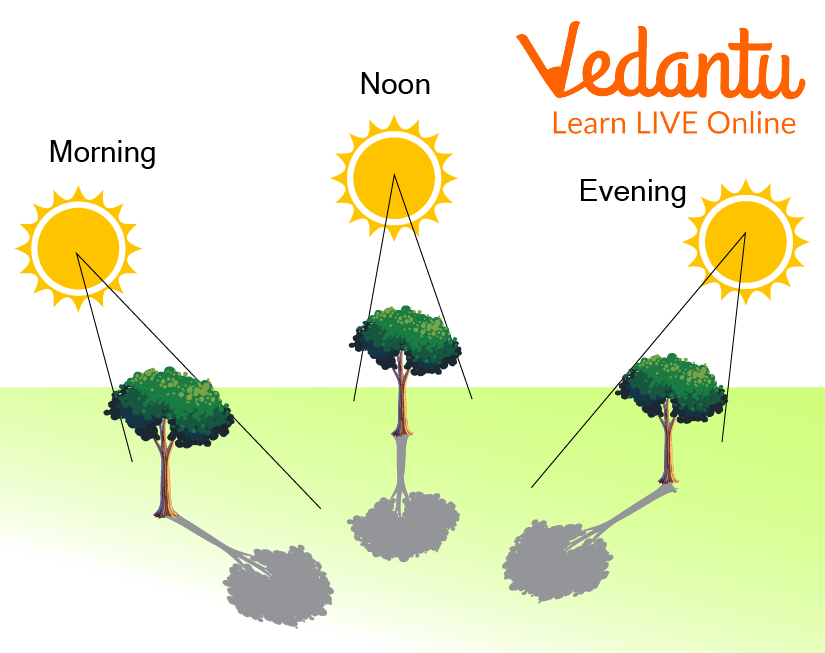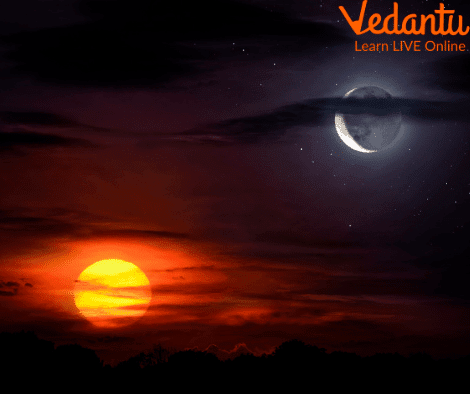




Visualise Patterns In The Sky
Have you ever seen a star and a cloud that looks like something similar to what you have seen in real life? For example, sometimes a rabbit is formed by the skies or candy or your toy or any of your favourite cartoon characters. But is that a pattern natural or is that all made up by our own imaginations?
Well in this case the rabbit is our imagination that could be a by-chance thing happening a day. But there are various patterns in nature and in the skies that we can see and observe regularly. Like the rising of the sun to the setting of the sun and many more. In this article, we will learn about such phenomena that have some patterns.

Cloud Forming a Rabbit
What is Meant by Patterns?
A pattern is anything that repeats itself over a span of time. It can happen the same way more than once in a day or at fixed times. Patterns can be made of any numbers, shapes, or even events that take place in nature. By studying various patterns we can estimate what is going to happen next.
Patterns in the Sky
Every natural phenomenon that occurs in nature has a certain pattern which means they repeat itself and can be predicted. In the case of skies we can see a pattern in the sky based on the appearance and position of the stars, sun, and moon; they all appear from a particular direction, follow the same route and set down the other side from which they appeared. These all are examples of patterns in the sky.
The Pattern in Sun and Moon
We can notice every day that the sun appears from the east and sets down in the west and similarly the moon follows a predictable path that is it appears from the east when the sun is setting in the west and then sets down in the west when the sun is appearing from the east. This is termed a pattern in the sun

Patterns in the Sun
These patterns in the sun are due to the rotation of the earth on its axis. When the earth while rotating faces the sun the area on that side of the earth starts experiencing the day or appearance of the sun whereas the opposite area on earth experiences the setting of the sun.
By all this we can conclude that the sun and the moon are always there, they are always shining. It's due to the earth's rotation we experience day and night.
This is called the pattern in the sun and moon. This is a natural pattern and can be seen every day. It brings about predictable changes like day and night and can also help us predict the timing on earth.

Sun And Moon
Star Pattern in The Sky
Patterns formed and followed by the stars are usually called constellations. In these patterns, we can see various stars coming together forming distinctive shapes that are easily recognizable. These constellation patterns or star patterns in the sky are also used by sailors to look at the sky and know the direction of the route they have to take. For example, the most common constellations that can be easily seen by everyone is the Ursa major or the great bear which has been used as a start clock throughout history.

Constellation
Summary
In the above article, we learned about all the patterns that occur naturally in our surroundings along with their significance and importance in our daily lives. Now to sum up all the learnings in short we can say, Patterns are really good to study as they help one see and understand the changes happening around them. Patterns in the sky can help in predicting direction, weather, climatic changes, time, and much more. Naturally occurring phenomenal patterns are the easiest and most wonderful way to study all the changes and make predictable circumstances. Sometimes these patterns are also used by the weather department to predict the weather of a particular area or even the whole country.
FAQs on The Patterns In The Sky
1. What are the common patterns we can observe in the sky?
We can observe several repeating patterns in the sky. These patterns help us understand time and seasons. The most common ones include:
The daily rising and setting of the Sun.
The changing shapes of the Moon over a month.
The changing length and direction of our shadows during the day.
Groups of stars, called constellations, appearing in the night sky.
2. How does the position of the Sun create a pattern in the sky every day?
The Sun follows a predictable pattern every day. It appears to rise in the east in the morning, move across the sky, reach its highest point around noon, and then set in the west in the evening. This daily movement from east to west is a fundamental pattern caused by the Earth's rotation.
3. What pattern do our shadows follow throughout the day?
Our shadows create a pattern that is opposite to the Sun's position. In the morning, when the Sun is in the east, our shadow is long and points to the west. Around noon, when the Sun is directly overhead, our shadow becomes very short, right beneath our feet. In the evening, as the Sun moves to the west, our shadow becomes long again and points to the east.
4. What is the changing pattern of the Moon that we see over a month?
The Moon shows a beautiful pattern of changing shapes, known as the phases of the Moon. It starts as a thin crescent, grows bigger each night to become a Half Moon, and then a full round circle called the Full Moon (Purnima). After this, it starts getting smaller again, becoming a Half Moon and a crescent, until it disappears for a day, which is called the New Moon (Amavasya). This entire cycle repeats approximately every 29 days.
5. What are the patterns made by groups of stars called?
The patterns formed by groups of stars in the night sky are called constellations. For thousands of years, people have imagined these patterns as shapes of animals, objects, or mythical heroes. A famous example visible in India is the Saptarishi (Ursa Major or the Great Bear), which is a group of seven bright stars that looks like a big ladle or a kite.
6. Why does the Sun, which is a star, look so different from the other stars?
The Sun looks much bigger and brighter than other stars because it is the closest star to Earth. The other stars we see at night are very, very far away, which makes them look like tiny points of light. It's similar to how a nearby street lamp looks much brighter than a distant city light.
7. Why can we only see stars at night and not during the day?
Stars are always present in the sky, even during the day. However, we cannot see them because the light from our Sun is so bright and overpowering that it fills our sky, making it impossible to see the much fainter light of the distant stars. When the Sun sets, the sky becomes dark, allowing the light from the stars to become visible.
8. How did people in ancient times use the patterns in the sky?
Before the invention of clocks and calendars, people relied heavily on sky patterns. They used the Sun's position and the length of shadows to tell the time of day. Sailors used the position of stars, like the Pole Star (Dhruva Tara), to navigate at night. The changing phases of the Moon were used to create calendars and track months.









